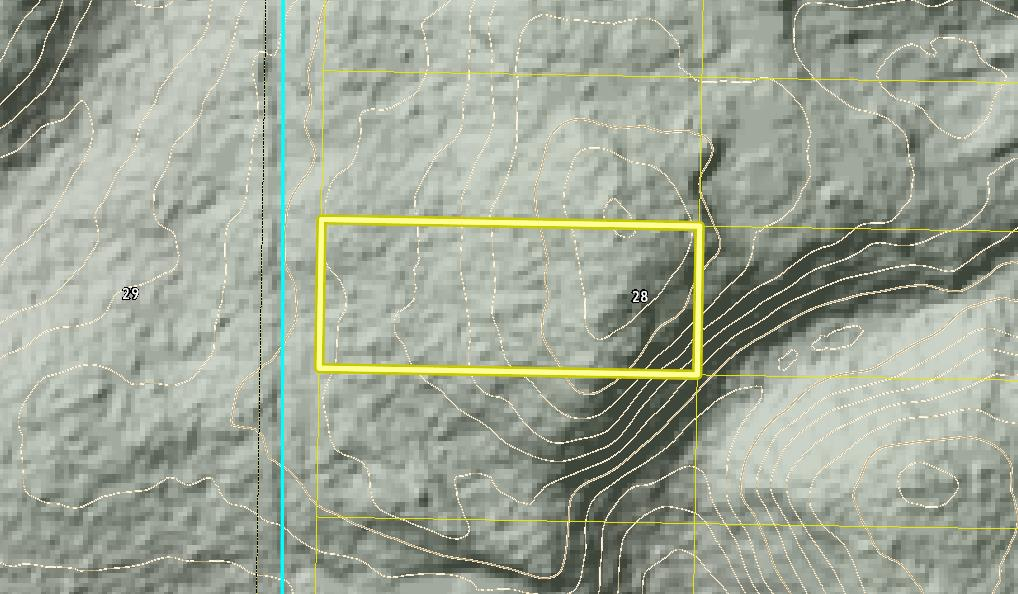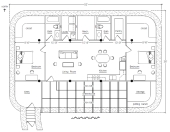Wow, guys! Thanks for all your responses! It is helpful to just hear peoples perspectives and the things they deem most important as revealed by the types of questions they ask. I will do my best to respond to the questions asked. Sorry if I miss any!
I should also say that we have only been in Alaska for 1 year, so we are still learning a lot about the area. But glad we have seen all 4 seasons now, as each is very different. It really helped us pick out what geographic area we would want to purchase land in.
Kay Fox:
Thanks for chiming in with your two cents! I have been telling my husband I want to get some perenials and fruiting trees picked out to get planted asap so they can get growing. I know that raspberries, blueberries, haskaps, saskatoons, and currents all do well here. I was thinking cherries may do alright too? I don't know anyone personally growing them, but I think there is an apple orchard not far away that has some. Apples would be on my list as well. If anyone has recommendations for other fruits and nuts to consider in 4a/b I'd appreciate hearing them. I know nothing about nuts, and I'm a novice gardener across the board. So feel free to over explain things
 John C Daley:
John C Daley:
- What are the contour intervals? They are 4ft
-Which way is the actual prevailing winds? This is hard to answer. I come from the midwest, where all storms and any wind of measurable strength comes from the west... It is not like that here. Being on a peninsula in the ocean, it seams that the wind can be different every day. I asked some of my husbands pilot colleagues, and they said it varies a lot. Storms tend to come from the south (could be south east, or south west), but that doesn't mean they hit you from the south, as a lot of circling happens. That said, it is never particularly strong it is rare to see more than a 12mph wind, and the property is very protected. Obviously any clearing we do will affect that, but all the surrounding properties still have a lot of trees, and many are completely untouched, and therefore thick enough you cant even walk through them (as ours was a couple of weeks ago).
-What would you do for water? At this point we are planning on a well and septic system. I have done some research on rainwater catchment. We certainly get enough rain for it, but there are a few hang ups that make the well/septic seem better to me. 1) Our storage tank would have to be buried (or in a basement, which we may not include in the house plans) due to the cold temps, which is an added complication. Especially when mother nature has provided a bunch of water stored underground already. 2) The grey water discharge would also have to be buried below frost line. With that being the case, you are pretty close to doing a septic anyway, and its not providing much benefit to your garden etc. Of course you could have a summer and a winter system, but in general irrigation is not a big concern here. In fact I can see a grey water system creating a liability, as many of our plants are near drowning this year as it is. 3) It is looking like required well depth will be reasonable. There is a "summer" home a couple lots away, and we got permission to look at their well. It was ~35ft to the surface of the water. We are thinking there is a good chance that a well would be affordable for us if our property is similar. 4) I really dislike the idea of storing our drinking water in plastic, and I don't see a way around it with rainwater catchment in a cold climate. If someone has one I am all ears. In all honesty, if there was a solution for the plastic issue, I would be much more willing to consider rainwater.
Additionally, as an owner/builder we can build our own septic system here and have it "certified" by doing an online course through the Borough.
- How remote are tradesmen? We are in a very well supplied and independent community. Tradesmen are easy to come by. But nothing is cheap here. So as much as we can practically do ourselves we will.
- How remote are quarry supplies? Quarry supplies of gravel, sand, road base etc. are plentiful and within a couple of miles.
- What size, type of house are you considering? At this point building with logs is our first choice. We have a friend who builds log cabin kits, and I think this will be the most appropriate and affordable option for us. As fun as a full scribed log home would be, we just don't have the time to devote to that, as my husband works full time and there is only so much I am capable of when it comes to heavy lifting. So it would be a butt and pass style log home with a tongue and grove cut in each log. Log appeals to us because it requires no vapor barriers, insulation, sheathing etc. That saves some time and expense for us, along with dramatically reducing the amount of synthetics in our home. Size is somewhat yet to be determined. If we can find an affordable on-site temporary housing solution, that is comfortable enough to live in for say 5 years, we would be able to save a few more pennies and build a slightly larger foot print. If our temporary housing is only comfortable enough to endure for a year or two, we would probably build smaller at first and add on in the future if necessary. We have looked at an example of our friends log kits in a 20x24ft foot print with a loft, and think that we could make that a comfortable home. Slightly larger would have its benefits, but isn't necessary.
S Bengi:
Some of your questions were answered above. Feel free to ask for further clarification.
The soil might be dry/okay now but what does it look like during spring snow melt? We saw the property at spring snow melt, and were surprised by how well the soil was draining. The "road" on the west edge of the property is just a 2 track right now. I would have expected it to be a lake, but there was only ever standing water in the pot holes, and it was not 'greasy' or soft to drive on. Of course good ground clearance was helpful since its just a 2 track, but it seemed to be draining better than we expected.
How will you water your expensive transplanted "bare root tree"? I am not sure what you mean by expensive transplanted bare root tree? I am a novice gardener on a good day. But in general watering is a gift from above here. If we get a week with out rain we rejoice, and the sunshine gives us the energy to bring the plants what they need if they are looking dry.
Wildlife:
What will you do when the rabbits/mole/etc come for your vegetables? This is a very good question. I am sure I will be at war with them. We would like to do a root cellar of some kind, and will need to find a way to make it vermin proof. Dealing with these critters (and particularly moose) while the plants are still in the garden will also be a challenge. I have heard that moose don't like garlic and onions, so I planted them around the edge of my small garden bed at our rental. So far it is working, but time will tell. Many people use fencing and greenhouses as a part of the moose deterrent.
How about bear/wolf/fox/etc, especially for your animals/pets? This will also be interesting. If we are able to lease the land across the rd, I imagine getting a guardian livestock dog to help with that. If its just on our own property, our boarder collie/aussie and trusty 17hmr & 12gauge will have to do.
Would it be easier to "hunt" trout from a stream vs trying to setup an aquaponic system, how about hunting a deer/etc vs rearing cows? Aquaponics has not made the list of things to research for me at this point. We have lots of fish to eat from the rivers. We love to hunt and fish, but some is easier than others, especially with limited time off from work for my husband. Being able to raise some of our own meat would be helpful. Hogs or goats may be a better option than beef. There are very few people raising beef here and I expect there are reasons for that.
How about using goats for diary vs a cow, maybe a nigerian x alphine, what do the local do? We have also considered this. Our neighbors may be interested in going in on a dairy animal together (especially if we are able to lease the land across the rd), and if thats the case we were thinking a cow may be worth it. I don't think we would require the output from a cow by ourselves, but between our families we would make good use of it.
How about growing some honey bee? How do you make it bear proof? My husband used to raise bees, and I wouldnt be shocked if we get a hive next spring. He knows more about it than me, but I think a solor hotwire fence is pretty effective bear proofing for bees.
HVAC-Insulation/heat:
As mentioned before we plan to build with log, and probably do a RMH as primary heat source. We would have a back up for when we have to leave town. Possibly electric infloor heat, or an electric base board. Electric is already run to the property, but natural gas is not. We could do propane or fuel oil, but seems like a more complicated investment for something we will seldom use. Solar wouldnt work well because it would really only be needed in the winter when we have very little daylight. I love Matt Walker's cook stoves, and will probably go with one of those for the RMH. An auxiliary propane burner would be used for quick jobs in the summer when a fire is not ideal, and an outdoor cook area is also in the plan (another thing to figure out a place for in relation to the house, along with the garden, animals etc.) Thankfully our summers are cold enough having one fire per day in the house to cook supper in the summer may not be out of the question. Regarding air exchange- You said a EVR sounds like a good idea. Do you mind elaborating on why? I'm of the mindset that there is nothing wrong with opening a window, regardless of temperature, if the house needs fresh air. I am thinking the RMH will be efficient enough (and wood plentiful enough) to not fret too much about loosing heat. I could be wrong on that. If someone has experience, please share!
Social:
We hope to build the home in a way we can add on if need be. One of those additions could be a ground floor bedroom, which would help for "aging in place". We will see what the Lord has, and if this is the "forever" spot. But we'd like to plan it well enough to keep it.
Luke Mitchell:
Very good advice on observing first. We do not know yet when we will be able to move to the land, but thinking it could be possible this spring. We would not have our house built yet, but would be living in some sort of temporary housing. I have been looking pretty hard at yurts, which is another topic, but thats an option. Hoping this would give us more "on site" observation time, while we continue to save and start picking away at building the house.
Regarding the alders: I agree about not eradicating a species, and have no intent of truly getting rid of all of them. The alders are thiiiick here, and are more of a high bush species of alder, not a tall tree. We could not eradicate them if we wanted to. It wasnt really clear in my first post, but this piece of property was so heavily wooded that you could not see more than 4-8ft in front of you, and "walking the property" was more like an obstacle course/ jungle gym. This makes useful observation incredibly difficult. We have said that we will take them all out, but we say that knowing that they will return in the spring. We feel we need to increase the visibility, and get an idea of what's the ground surface is actually like to determine where building is even possible. We are leaving the ones on the property line, and I'm sure they will fill in any space we give them in the spring. We are keeping the nicer sections of the branches to use for deck railings, furniture, etc.
All that said, your comments on the benefits of the Alder are really encouraging! We can have as many of them as our hearts desire I think, and this info will help me better understand how to make the best use of them. Also your comments on the soil are helpful. I am hoping all that organic matter on top will make things grow! Just need to determine where on the property to put the garden, hugelkulture beds, etc.
Eric Hanson:
I dont know much about biochar. What are the benifits of this as compared with hugelkulture, composting, etc? I like the idea of 1/4 garden, 1/4 animals. Could be a good break up. And using the steep section of hill to the SE for berries is a great idea. Would be nice to make that section useful for something.
Trace: Good point about space limitations. If we can't get a lease on the land across the rd, I expect the poultry will be the best use of the space we have? Does anyone have any other thoughts on that?
Anne:
Thanks for the comments and links!
Thank you all for your input! We are always mulling things over, as we go about daily tasks, and your input is helping us along.

 6
6






 2
2








 3
3




 8
8




 3
3




 3
3




 6
6




 7
7





 6
6




 4
4









 2
2




 5
5









 1
1














 3
3






 2
2




 2
2




 We have pondered many ideas and now that the time is coming to actually act on some of them, its always good to have feedback and different perspectives. Thankfully we do not have permafrost in our region, and the water table is low enough we could potentially put in a basement if we desired. We have had some bad experiences with wet moldy basements, though, so we are not sure that we'd want to. However we would like to have a root cellar and it would be terribly convenient to have it accessible from the house, such as in a basement. We have talked about maybe just doing a short crawl space and a trap door (or a couple) in the floor to access an enclosed varmin proof box storing produce. For a foundation we are considering Helical Posts (sometimes called piles), which would mean that the crawl space would be above ground, and only a couple of feet high. We would of course have to sheath and insulate it to keep plumbing and produce from freezing. Any feedback on that idea is appreciated.
We have pondered many ideas and now that the time is coming to actually act on some of them, its always good to have feedback and different perspectives. Thankfully we do not have permafrost in our region, and the water table is low enough we could potentially put in a basement if we desired. We have had some bad experiences with wet moldy basements, though, so we are not sure that we'd want to. However we would like to have a root cellar and it would be terribly convenient to have it accessible from the house, such as in a basement. We have talked about maybe just doing a short crawl space and a trap door (or a couple) in the floor to access an enclosed varmin proof box storing produce. For a foundation we are considering Helical Posts (sometimes called piles), which would mean that the crawl space would be above ground, and only a couple of feet high. We would of course have to sheath and insulate it to keep plumbing and produce from freezing. Any feedback on that idea is appreciated.










 2
2





 2
2




 1
1




 1
1




 Wood shed - I almost forgot this one. We would be very cold with out it! Planning to build a Matt Walkers Tiny Cook Stove in the guest house, and the Continental Cook Stove in the main house. So a wood shed is important.
Wood shed - I almost forgot this one. We would be very cold with out it! Planning to build a Matt Walkers Tiny Cook Stove in the guest house, and the Continental Cook Stove in the main house. So a wood shed is important.











